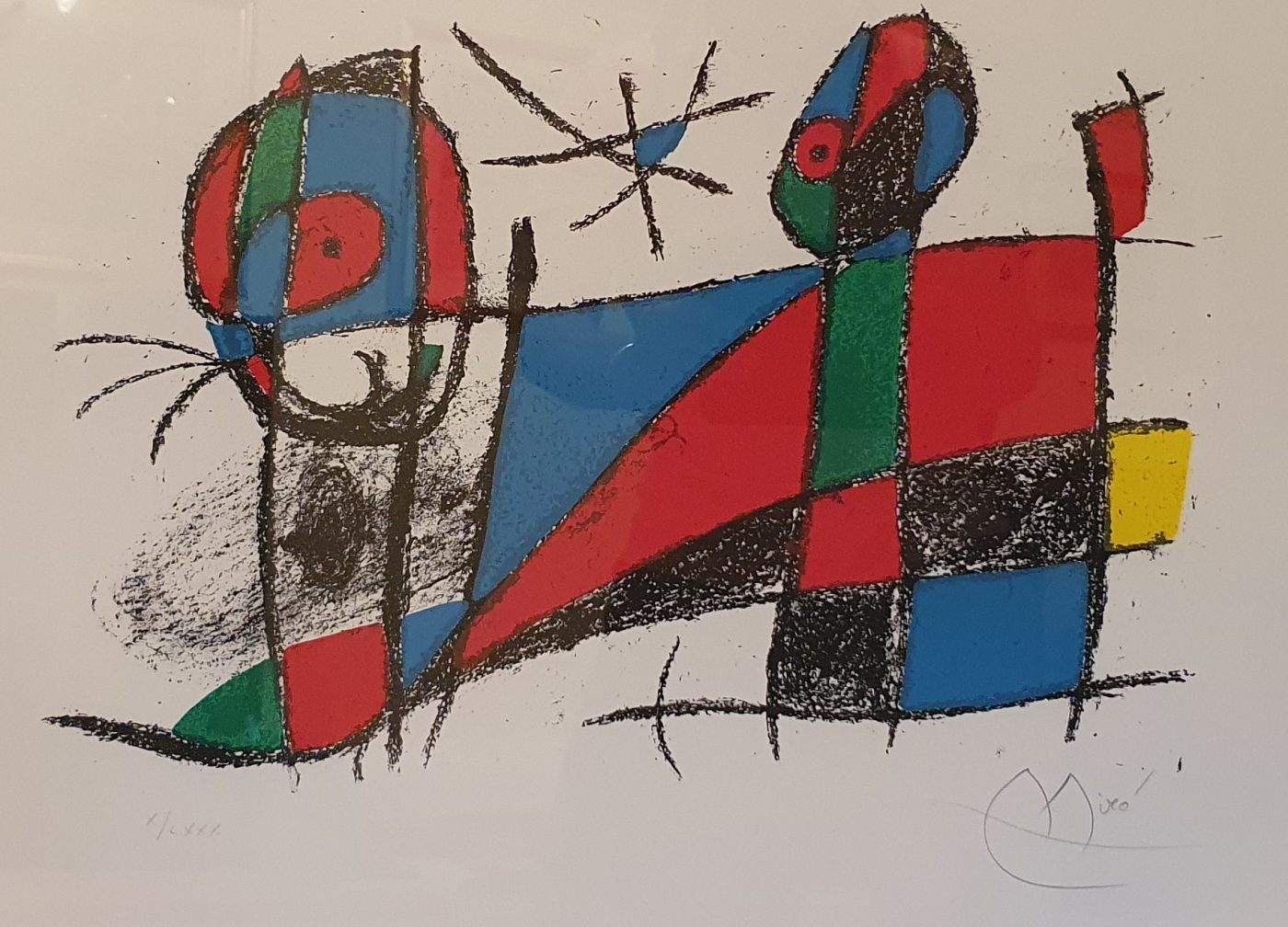Catalan modernist Joan Miró (1893–1983) was the main driving force in moving 20th-century art toward complete abstraction. He had a wide range of artistic skills – original paintings, prints, ceramics, sculptures, engravings and murals . Although he is often considered an early Surrealist because of his imagery and his evocation of the subconscious, he defies neat categorization. Miró’s identity is rooted in the city of his birth; Barcelona. To this day, a number of his public artworks can be found there, including the 72-foot-tall statue Dona i Ocell (Woman and Bird)ó. Female and birdlike forms, along with bright colours and the theme of Catalan pride, are recurring elements in his work. The radical visual world Miró created with his expressive lines, symbols and biomorphic shapes influenced such American abstract expressionists as Jackson Pollock and the colour field painters like Mark Rothko. Miró continued to work and experiment until his death at the age of 90 in 1983. Five years before that, he was quoted saying, “I painted these paintings in a frenzy, with real violence so that people will know that I am alive, that I’m breathing, that I still have a few more places to go. I’m heading in new directions.” Here at Hispanic Antiques we have a fabulous Miró lithograph (HA0076) from the deluxe edition of Lithographs II – signed in pencil and numbered X/LXXX on arches paper. It is one of only 11 lithographs in the second volume of the catalogue raisonné of the artist’s work and is titled ‘Le Chat Heureux’ or ‘The Happy Cat’.

